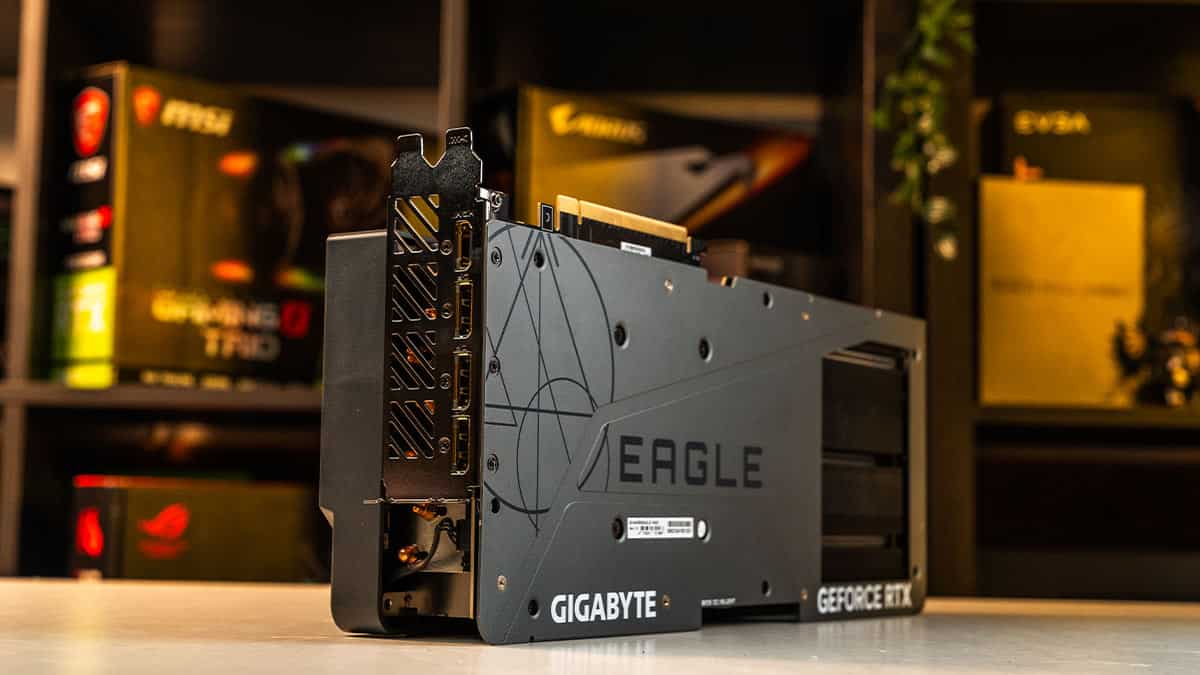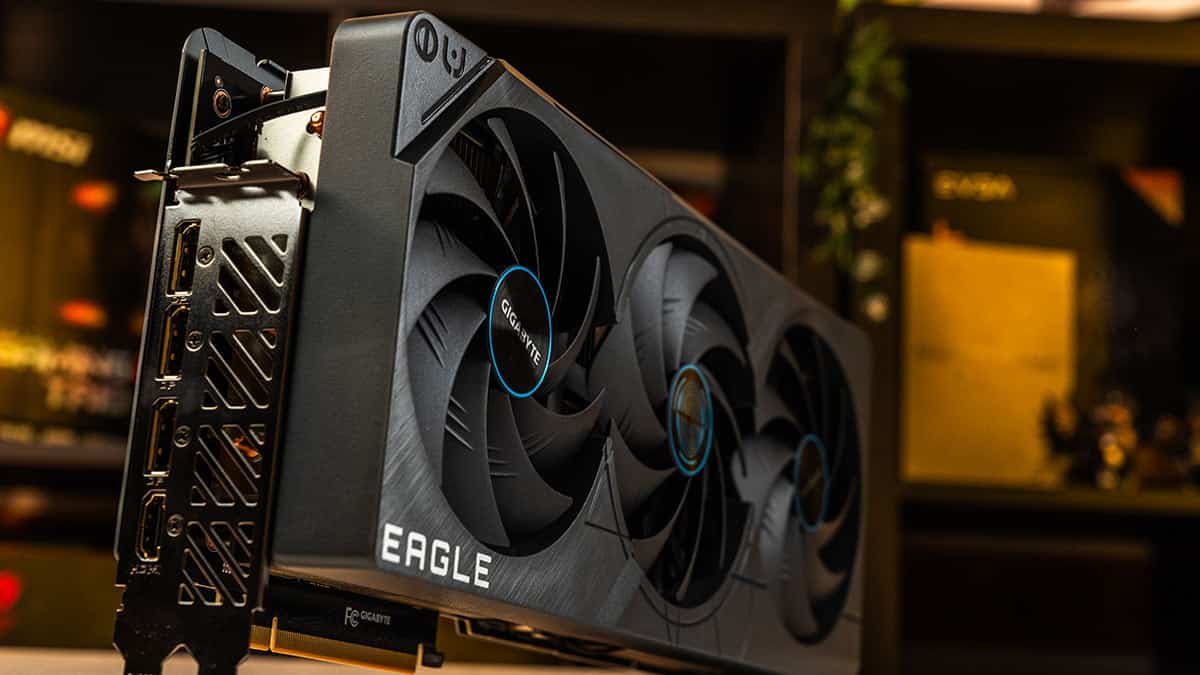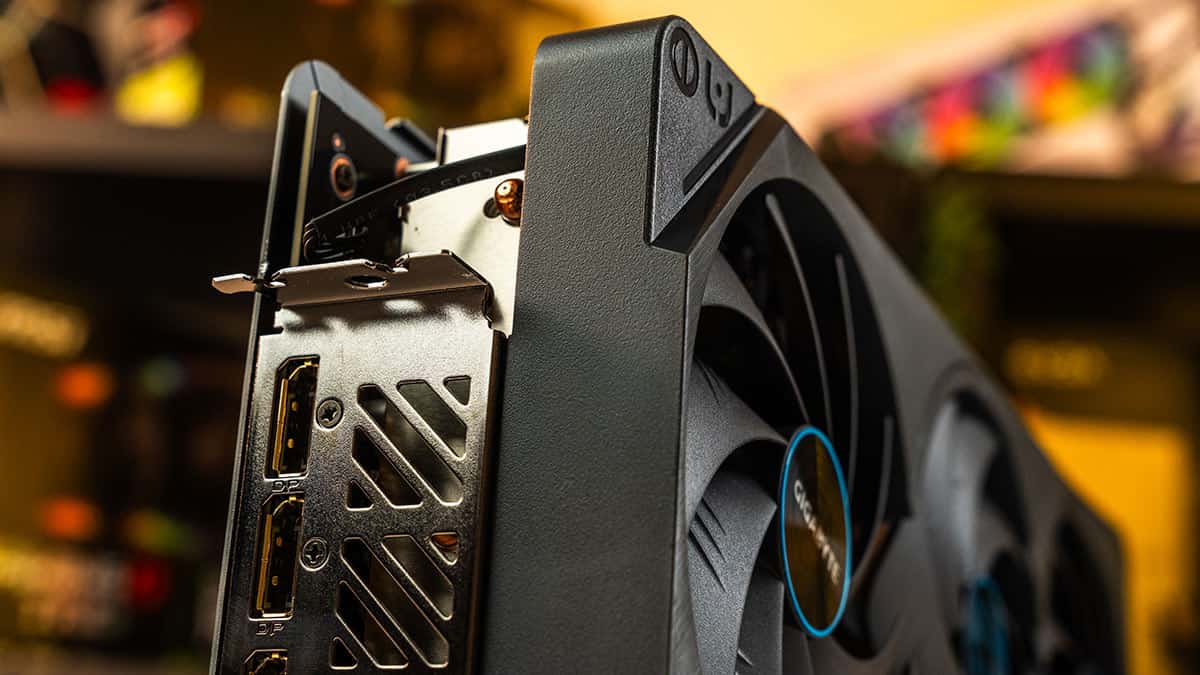You can trust VideoGamer. Our team of gaming experts spend hours testing and reviewing the latest games, to ensure you're reading the most comprehensive guide possible. Rest assured, all imagery and advice is unique and original. Check out how we test and review games here
- Leading performance
- DLSS 3 Frame Generation
- Good amount of GDDR6X memory
- Premium pricing
- Relatively high TGP
The RTX 4080 may be entering its second year of commercial availability, but it’s in no way showing down. Armed with DLSS 3 Frame Generation, a mighty 16GB GDDR6X memory, and leading bandwidth, it’s a card aimed at enthusiasts, and that constantly delivers on the promise of true, uncompromising 4K gaming. Let’s get into all the specifics about why this model still deserves to be considered one of the best graphics cards you can buy.
This remains true even in the face of the RTX 4080 Super which is launching at the end of this month. This latest iteration promises minor performance improvements at a reduced price point, so it’s definitely worth weighing up the RTX 4080 vs RTX 4080 Super if you’re on the fence about which card is right for you. We’re also showing you where to buy RTX 4080 Super graphics cards when they are released, too.
Nvidia RTX 4080: Price and availability
The RTX 4080 carries an MSRP starting from $1,199 / £1,139 for the Founders Edition model as set by Nvidia. Our review unit is the Gigabyte RTX 4080 Eagle OC which is currently available for the stated recommended retail price set by Nvidia, and it’s possible we could see price drops as the incoming RTX 4080 Super looms for $200 / £180 less. You can find this card worldwide in territories such as the US and the UK from retailers such as Amazon, Best Buy, and Newegg.
Gigabyte RTX 4080 Eagle OC

CUDA cores
9728
VRAM
16GB GDDR6X
Memory bus width
256-bit
GPU processor
AD103
Nvidia RTX 4080 review: Design and features

The RTX 4080 is a gaming graphics card aimed at those wanting leading 4K performance and is achieved through its hardware. Running on the AD103 die, this Ada flagship is fulled by 9,728 CUDA cores and clocked at 2,520 MHz (FE model is 2,505 MHz) with 16GB GDDR6X memory clocked at 24.2 Gbps. It’s built on a 256-bit memory bus and features a total of three DisplayPort 1.4a ports and a single HDMI 2.1 connection. You’ll also find an anti-sag bracket in the box alongside a 16-pin adapter for the 3x PCIe power cables.
In terms of our specific GPU, the RTX 4080 Gigabyte Eagle OC features what the brand describes as its “Windforce Cooling System” which is a combination of three 110mm fans spinning in alternative directions, complete with 10 composite copper heat pipes connected to a large vapor chamber that sits on the GPU die itself. That’s right, this is a tri-fan setup resulting in one of the longer and thicker RTX 4080 models available, being a touch bigger than Nvidia’s Founders Edition model. For reference, this one measures in at 13.4 inches x 5.9 inches (LxW). In contrast, the Founders Edition model comes in at 11.9 inches x 5.3 inches (LxW) which is considerably smaller, but may not have as effective cooling in comparison.
Nvidia RTX 4080 review: Performance

In the benchmarks conducted by WePC’s Sebastian Kozlowski, the RTX 4080 performed admirably across the board hitting its stride and being most comfortable in 4K. Doom Eternal was an absolute boon in 4K with the well-optimised shooter running at a mighty 234fps average without ray tracing and a staggering 161fps with RT enabled. The same high numbers can be found in CS2 with the popular shooter achieving an average of 173fps in 2160p which melds the high framerates needed for competitive play with leading visual fidelity.
We can turn our attention to more graphically intense titles as well such as The Finals which averaged around 99fps without ray tracing and 96fps with RT enabled. These figures are similar with Avatar Frontiers of Pandora and Assassin’s Creed Mirage which averaged around 96fps and 95fps in 4K respectively. Where you start to see lower dips around the 4K60 mark is when really cranking up those sliders and keeping DLSS disabled, that’s the case with Cyberpunk 2077 in Ultra settings with an average of 51fps without ray tracing and around 28fps with the tech turned on. We recommend using DLSS 3 Frame Generation for games like this to push the framerates further than native rendering allows.
Those with one of the best 1440p gaming monitors may also want to consider the RTX 4080 as well if our benchmark testing is anything to go by. Depending on the game, there was quite a dramatic increase when rendering in this target resolution instead with some of the biggest leads seen in Cyberpunk 2077 with 121fps average and Doom Eternal sporting a leading 363fps for silky smooth gameplay. Anything that comfortably pushes above the 120fps mark will be ideal for high refresh rate monitors and the RTX 4080 delivers in this respect.
Everything we threw at the RTX 4080 was easily able to achieve well over 100fps in 1440p with the likes of Assassin’s Creed Mirage and Avatar Frontiers of Pandora sporting 139fps and 116fps average respectively. Competitive gamers aren’t left out either, as The Finals with “Epic Settings” racked up a 188fps average which means you can have the edge in esports play without relying on a low resolution such as 1080p, which would be completely overkill for a card as powerful as this.
Should you buy the Nvidia RTX 4080?

The RTX 4080 is an undeniably powerful graphics card with leading performance that’s sure to satisfy gaming enthusiasts. However, there’s no getting around the fact that you’re paying a premium for all power. Coming in at $1,199 / £1,139, there’s a markup of around 71% when compared to the MSRP of the RTX 3080 so the 80-class won’t be as affordable this time around.
That’s the hard thing about recommending the RTX 4080 in 2024, especially with the incoming launch of the RTX 4080 Super that’s due for release at the end of the month. This upcoming GPU is scheduled to retail a few $200 / £180 cheaper and be slightly faster, too. If you want leading performance in 1440p and 4K then my recommendation is to wait for the newer card or pick up the standard RTX 4080 on sale should it be discounted in the next few weeks.
Copy by Aleksha McLoughlin; testing by Sebastian Kozlowski


